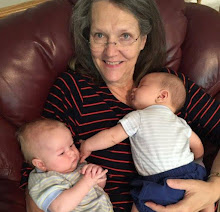 The image depicts the attack on the Pequot fortified village at Mystic on June 5, 1637. The woodcut was included in John Underhill’s account of the Pequot War published in London in 1638. John Underhill was second in command to John Mason and the woodcut is considered an accurate depiction of the attack which left over 400 Pequot men, women and children dead.
The image depicts the attack on the Pequot fortified village at Mystic on June 5, 1637. The woodcut was included in John Underhill’s account of the Pequot War published in London in 1638. John Underhill was second in command to John Mason and the woodcut is considered an accurate depiction of the attack which left over 400 Pequot men, women and children dead.Pequot means "Destroyer"
Pequot Indian War, 1637
Pronounced pee-kwhat
The young Englishmen rose before daybreak on June 5, 1637, still tired from their previous days of marching. The plan was for Captain Mason to lead one force to attack through the west gate and Captain Underhill attack through the south gate. As Mason’s force neared the gate everyone in the camp was asleep, but than a dog began to bark, and then one of the Indians began shouting, “Owanux, Owanux” (Englishmen, Englishmen). The Indians were so shocked and fearful at the sound of the musketry they remained in their huts and began returning fire.
Captain Mason forced his way into one of the wigwams and he was attacked by several warriors. William Hayden followed him in and he saw a Pequot with his bow drawn with the arrow aimed at Mason Hayden attacked and sliced through the bowstring and the Indian with his sword, just in time to save the life of his Commander.
When the fatigued Captain left the wigwam, he saw that the battle was in doubt. The Indians remained in their shelters, firing arrows and wounding his confused, young soldiers and he saw victory slipping away. At that moment he changed his battle plan and decided that the only course to take was to burn the fort and force the Indians out of their protective shelters. Mason’s men retreated outside of the burning fort and in a short time 400 Indians died from the flames and musket fire. Seven were taken prisoner. The crucial battle was won but final victory was not yet assured because Pequots from the second nearby fort soon arrived to threaten the retreat of the English force. Again, Mason’s military experience foiled the Pequots attempts to hinder the retreat and the English force escaped. Fighting continued at various points during the following months, but the battle at Mystic essentially broke the back and spirits of the Pequot tribe and ended its domination in Connecticut. The other tribes in the area were as elated with this victory as the English were.
Captain John Mason has been credited with gaining victory over the Pequots, and rightly so. Without his skillful leadership, his strategy, planning and execution, the English could not have overcome the Pequot tribe. Had the battle been lost, Mason’s young soldiers would have been destroyed and soon after, their families would have been annihilated on their unprotected homesteads.
John MASON
Born: abt. 1600 in England.
Death: 1672, age 72 in Norwich, Connecticut
Nationality: English.
Occupation: Major in Colonial Militia.
Known for: Led colonial militia in Mystic Massacre of Pequot Indians; Deputy Governor Connecticut.
Puritan.
John MASON (c. 1600–1672) was an English Army Major who immigrated to New England in 1632. Within five years he had joined those moving west from the Massachusetts Bay Colony to the nascent settlements along the Connecticut River that would become the Connecticut Colony. Tensions there rose between the settlers and the dominant Indian tribe in the area, the Pequots, ultimately leading to bloodshed. After some English settlers were found dead, the Connecticut Colony appointed Mason to lead an expedition against the Pequot stronghold in Mystic, Connecticut. The result is known as the Mystic Massacre, and it was the major engagement of the Pequot War, which virtually destroyed the Pequot tribe.
After the war, Mason became Deputy Governor of Connecticut. He and a number of others were instrumental in the founding of Norwich, Connecticut, where he died in 1672.

No comments:
Post a Comment